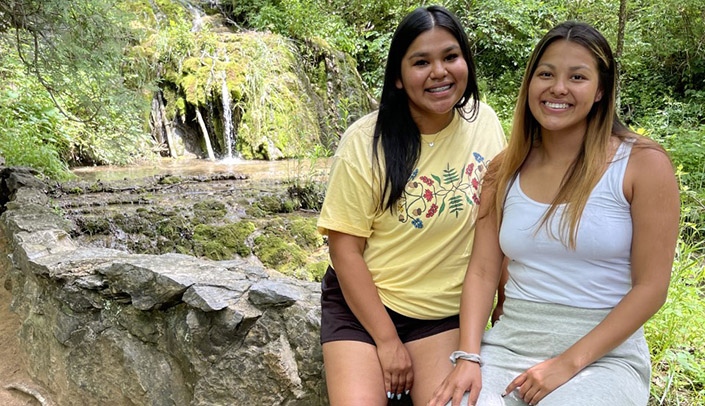At some point while listening to a nurse practitioner talk about her career, 12-year-old Kae Earth figured out exactly what she wanted to do with her life.
“We were on a tour at UNMC, and this nurse practitioner was telling us about the path she took. That was a big eye-opener for me because I think I kind of always knew that I wanted to go into health care, but I just didn’t know what I wanted to do or that there were so many different choices,” Earth said.
Earth and her sister Charli both credit the Science Education Partnership Award (SEPA) science camp they attended during middle school with exposing them to research, health professions and college life.
Earth settled on becoming a physician assistant and today is enrolled in UNMC’s Rural Health Opportunities Program at Wayne State College in the pre-physician assistant program.
“I’ve been really excited and happy about my decision ever since,” she said.
More than 439 middle school students representing eight tribes and communities in Nebraska and South Dakota have participated in the three-day SEPA summer science camp since it started in 2007.
The five-year SEPA Award comes from the National Institute of General Medical Sciences and has successfully been funded every year since 2005. This year marks the beginning of the fourth cycle the grant has been awarded with funding totaling $1.3 million.
Enrolled members of the Winnebago Tribe of Nebraska, the Earths say the program provides opportunities for Native youth that they would not otherwise have.
“The reservation is limited, and a lot of kids don’t know what is really out there. A few days away from home helps teach you a lot, shows you what it’s like to be in a college dorm and helps you mature,” Charli Earth said.
Maurice Godfrey, PhD, principal investigator on the grant and a professor with the Munroe-Meyer Institute for Genetics and Rehabilitation, said he is grateful for another renewal of what has become a rewarding program.
“Reading the National Institute of Health reviews of our first SEPA proposal one would have thought there was no chance we would have had to even start, much less imagine we are now starting our 16th year, but someone recognized that we had the potential to bring NIH and health and science education to an audience in great need and it has paid off,” Dr. Godfrey said.

Great work providing opportunities for students, congratulations Dr. Godfrey and Liliana !
Fabulous news. Congratulations to Dr. Godfrey and Dr. Bronner
Great job Dr. Godfrey! This is an important program and I'm glad to see how it is helping people.
Congratulations to Prof Godfrey and Dr Bronner for initiating this valuable program!